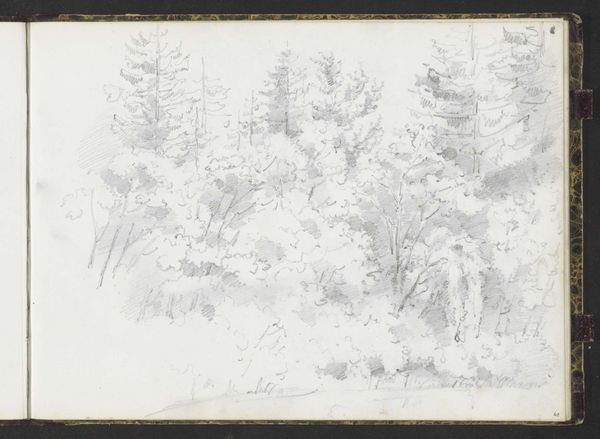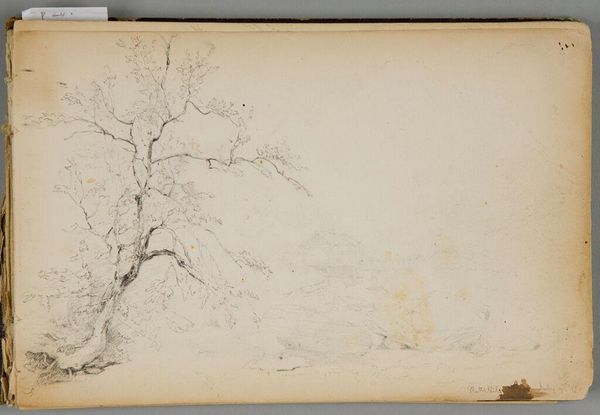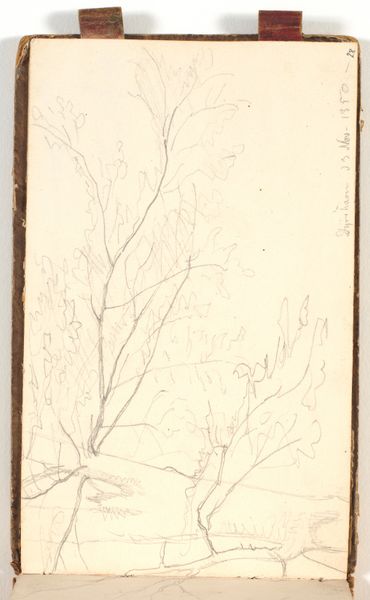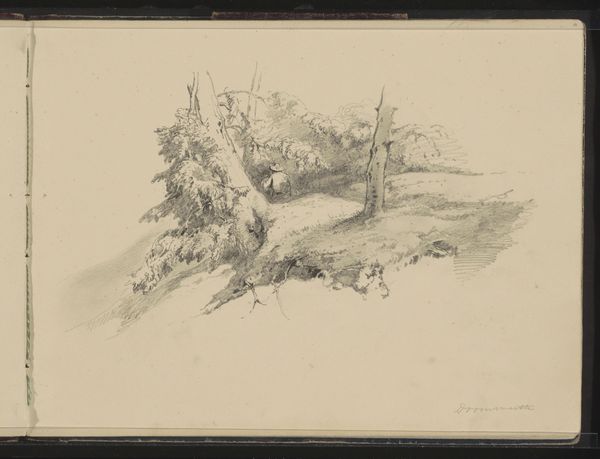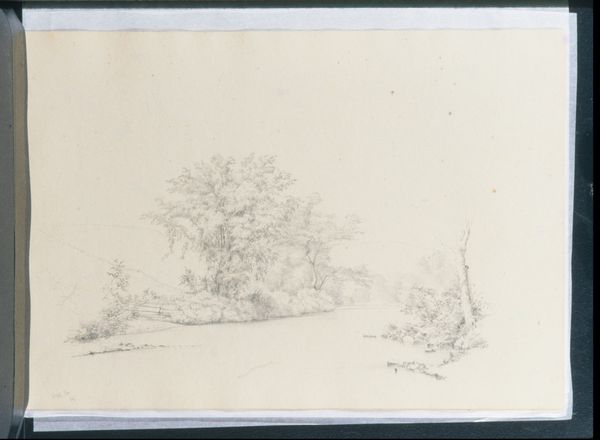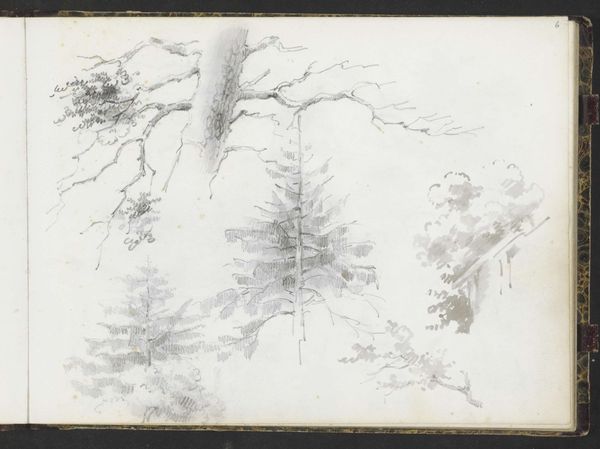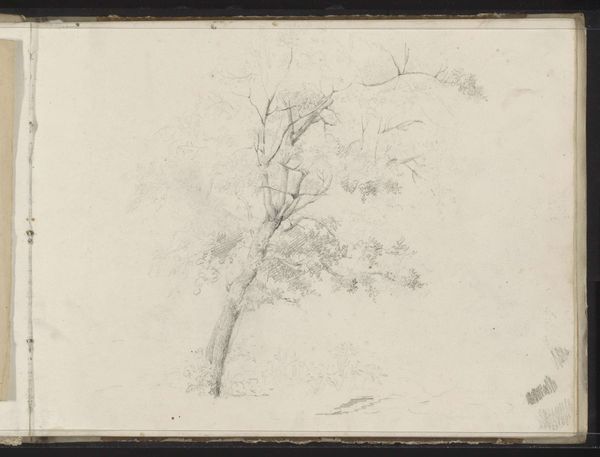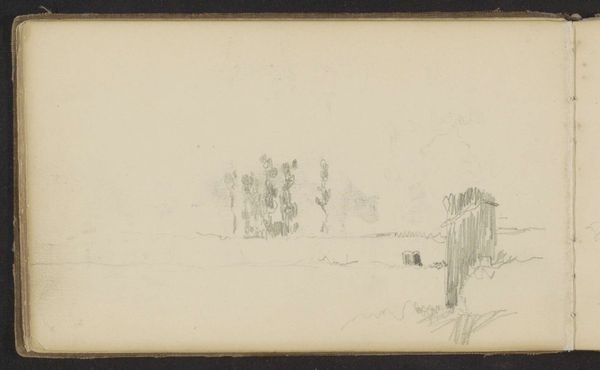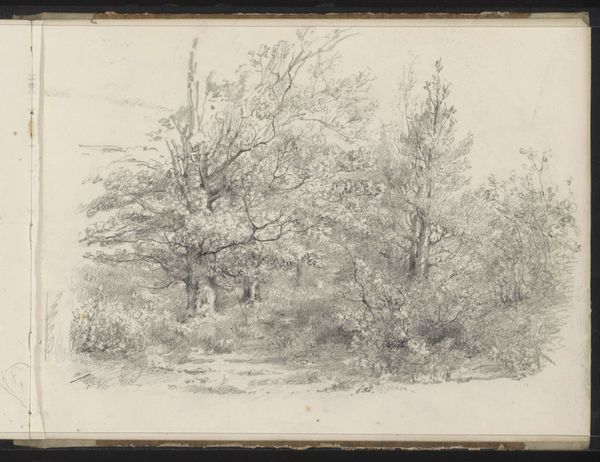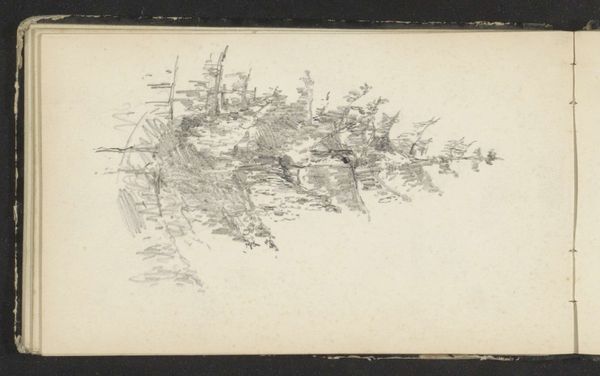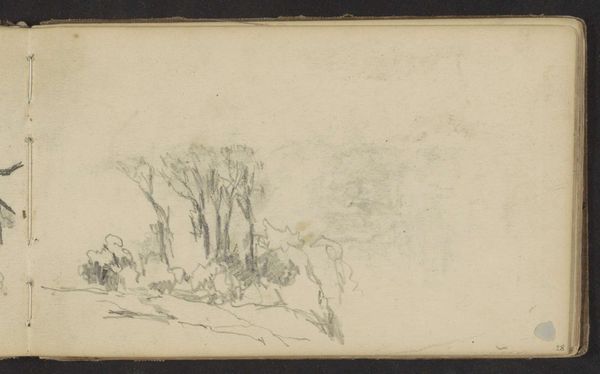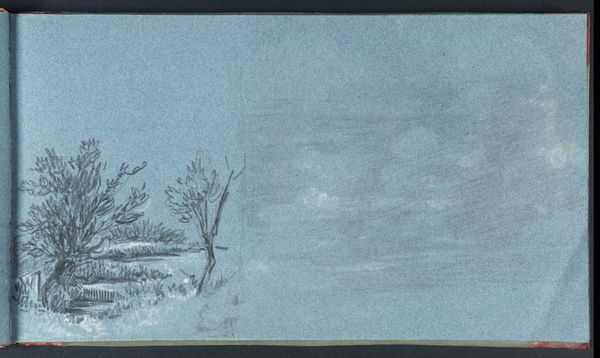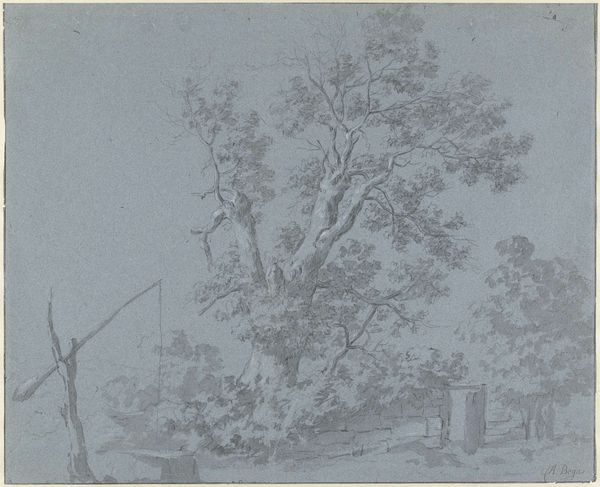
drawing, paper, pencil
#
drawing
#
landscape
#
paper
#
coloured pencil
#
romanticism
#
pencil
#
line
#
sketchbook drawing
Copyright: Rijks Museum: Open Domain
Curator: Looking at this drawing by Hendrik Abraham Klinkhamer, made between 1843 and 1846, titled "Bomen en struiken," or "Trees and Shrubs," one is immediately struck by its delicate nature. It's currently housed here at the Rijksmuseum. Editor: Yes, delicate is the word. It feels like a fleeting observation, barely there on the page. The light pencil work really emphasizes the texture of the paper itself, almost as important as the trees it depicts. Curator: Klinkhamer, working during the rise of Romanticism, certainly uses nature to explore personal sentiment. But what kind of sentiment? How might the public have responded to it at the time? Landscape was not merely topography, but imbued with symbolic weight, a place for experiencing sublime awe, or finding spiritual solace. Editor: I wonder about the materials readily available to Klinkhamer—the grade of pencil, the kind of paper—and how these influenced the very form and function of the work. Was sketching outdoors like this considered simply practice for "high art," or a valued skill on par with the paintings he might produce in the studio? Curator: It’s difficult to separate those spheres entirely back then, particularly for an artist not working within the official art academy system. Public perception dictated how he operated within these hierarchies to secure patronage or exhibition opportunities, influencing what supplies he invested in to craft particular artwork to satisfy market demand. Editor: Interesting. To me, it speaks to a certain accessibility, even democratisation, of art production. Not everyone could afford oils, but relatively inexpensive pencils and paper made it easier to participate, in some way, in visual culture. It suggests a hands-on engagement with landscape and its representation, where materiality is central. Curator: That's a valid interpretation, and an element worth pondering, as we assess this artwork in the twenty-first century. Editor: Indeed. A humble, unpretentious sketch that nonetheless provides a compelling insight into its maker's world.
Comments
No comments
Be the first to comment and join the conversation on the ultimate creative platform.

